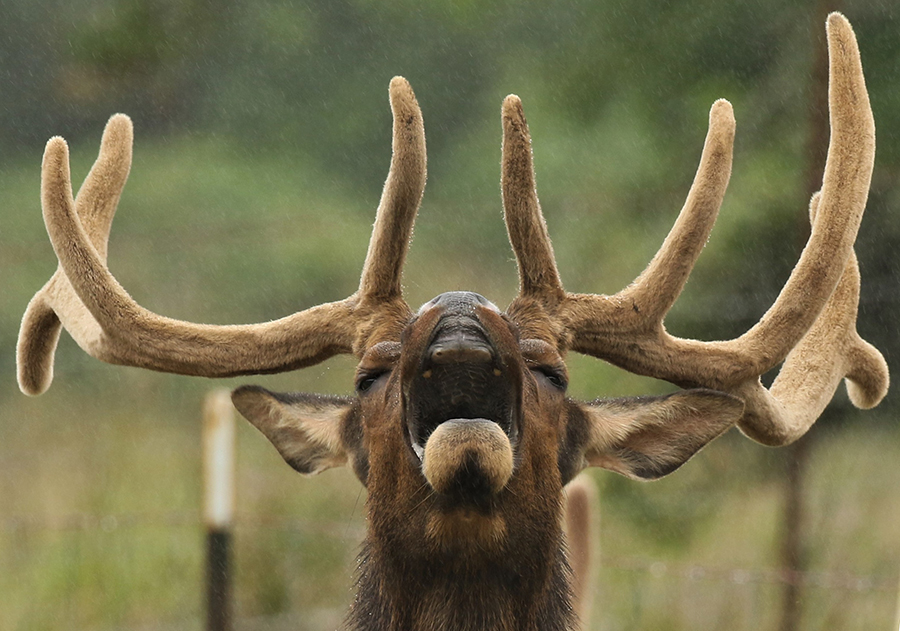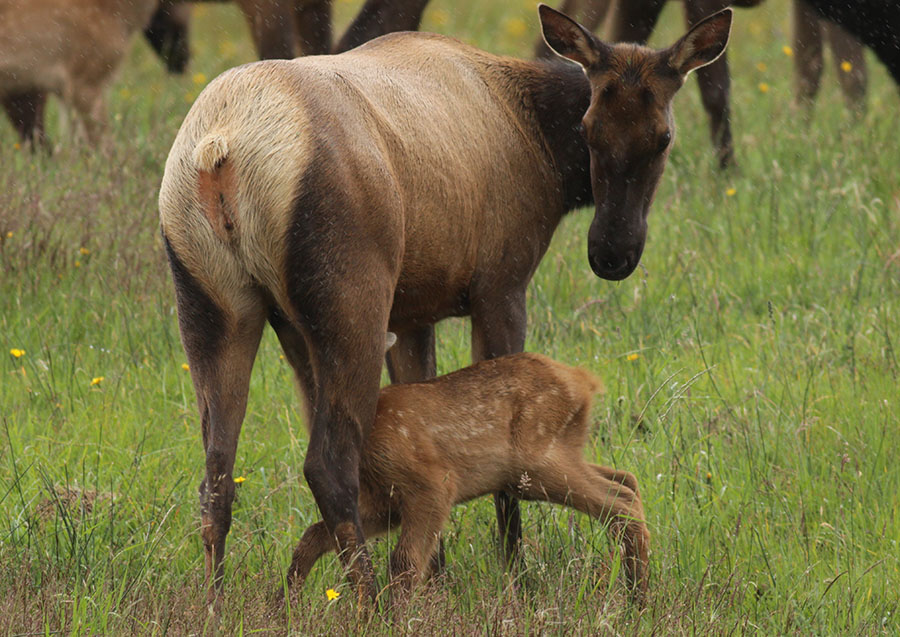
Elk have been on the Oregon Coast a long, long, long, long time. Scientists believe elk migrated from Asia to North America over Beringia—better known as the Bering Land Bridge—some 120,000 years ago. The animals would have been a familiar sight to the first human hunters who migrated here tens of thousands of years later. Elk survived, and continue to survive, by being able to eat almost any kind of plant they can find, while we humans are limited to eating “soft fruits, a few easily digestible seeds, and the milk and flesh of our more versatile animal cousins,” as David Haskell writes in The Forest Unseen, one of naturalist and photographer Neal Maine’s favorite books. Here is more of Haskell’s illumination of the wonders of digestion among elk and other ruminants (accompanied by Neal’s photography).
Elk don’t have upper front teeth; they “bite” by pinching and sharply pulling, using their lower teeth and the tough pad on their upper jaw. Those ferns, ivy vines, grass blades, tree bark, Scotch broom and other veggie morsels are then “sent to the back teeth to be ground up, then swallowed.” And here’s where it gets really interesting. Elk can’t digest cellulose on their own. They are dependent on partnerships with tiny single-celled organisms including (but not limited to) bacteria that dwell in the rumen, a special part of the elk’s digestive system ahead of the stomach and intestines. Sliding into the rumen, chewed-up food enters “another ecosystem, a churning vat of microbes … The rumen is surrounded by muscles that churn the contents. Flaps of skin inside the rumen act like baffles in a washing machine, flipping the food over as it moves.
“Most microbes in the rumen cannot live in the presence of oxygen. They are descendants of ancient creatures that evolved in a very different atmosphere. Only when photosynthesis was invented, about two and a half billion years ago, did oxygen become part of earth’s air and, because oxygen is a dangerous, reactive chemical, this poisoning of the planet wiped out many creatures and forced others into hiding. These oxygen-haters live to this day in lake bottoms, in swamps, and deep in the soil, eking out an existence in oxygen-free environments …
“The evolution of animal guts gave oxygen-hating refugees a potential new place in which to hide … Microbes thrive in this churning spa … A million million individual bacteria of at least two hundred species swim through every milliliter of rumen fluid. Some of these microbes have been described; others await description or discovery.” In addition to bacteria, the rumen is host to single-celled organisms called protists plus fungi, all of which play a role in breaking down the elk’s breakfast. “The diversity of life in the rumen makes possible the complete digestion of the plant remains.”
Turns out water bears may not be the most interesting microscopic organisms thriving on NCLC lands. Inside elk—the largest land mammal on Oregon’s North Coast—live millions of organisms that are essential to the elk’s existence in this landscape.

“Milk would ferment and create gas in the rumen,” writes David Haskell of newborn elk calves such as this one. “The sucking reflex therefore triggers the opening of a bypass that sends milk past the rumen, into the next part of the stomach.” Young elk “must build their rumen community from scratch, a process that takes several weeks. During this time, they nibble their mother, the soil, and the vegetation, gathering and swallowing the microbes that will become their helpers.”
Comments